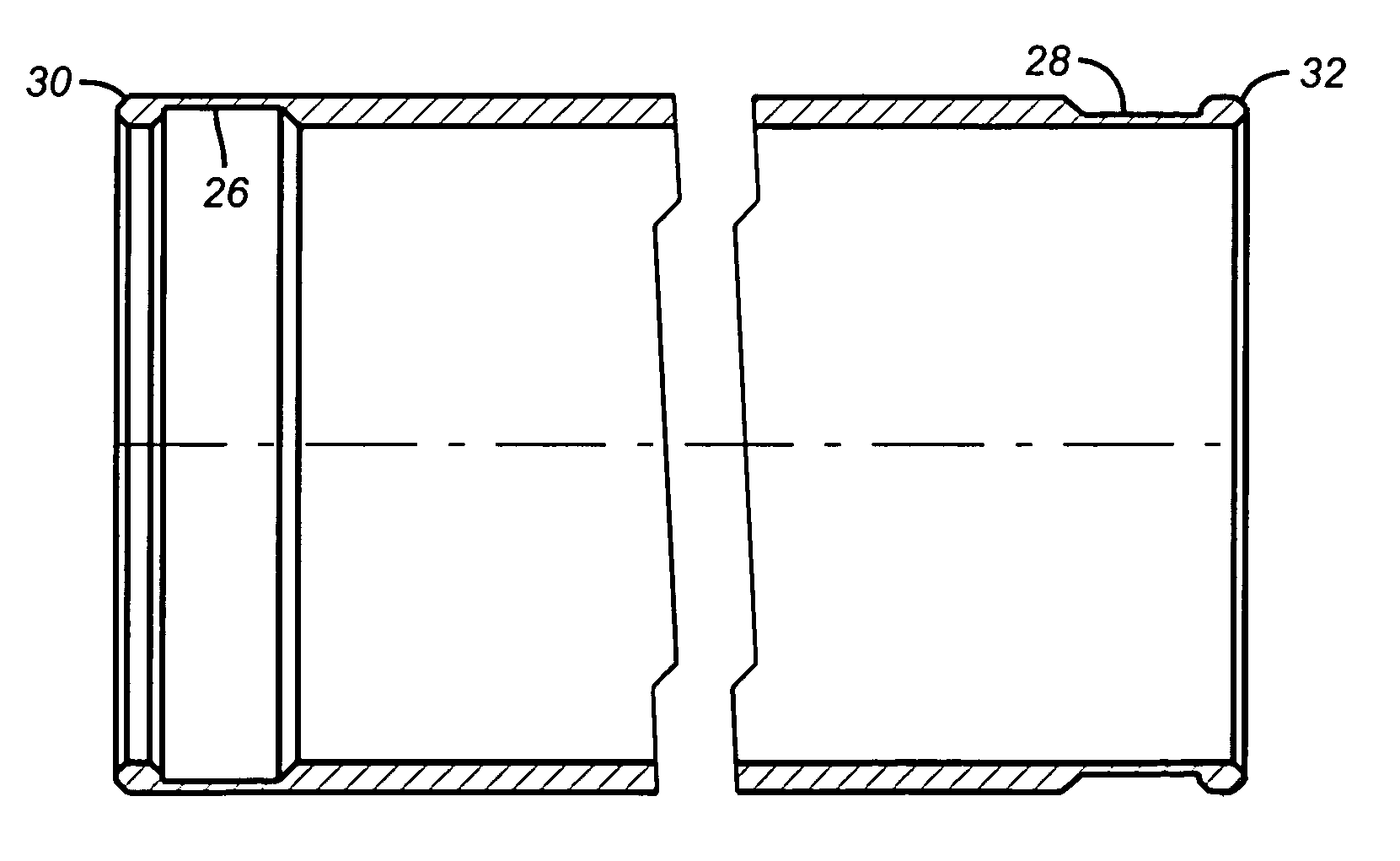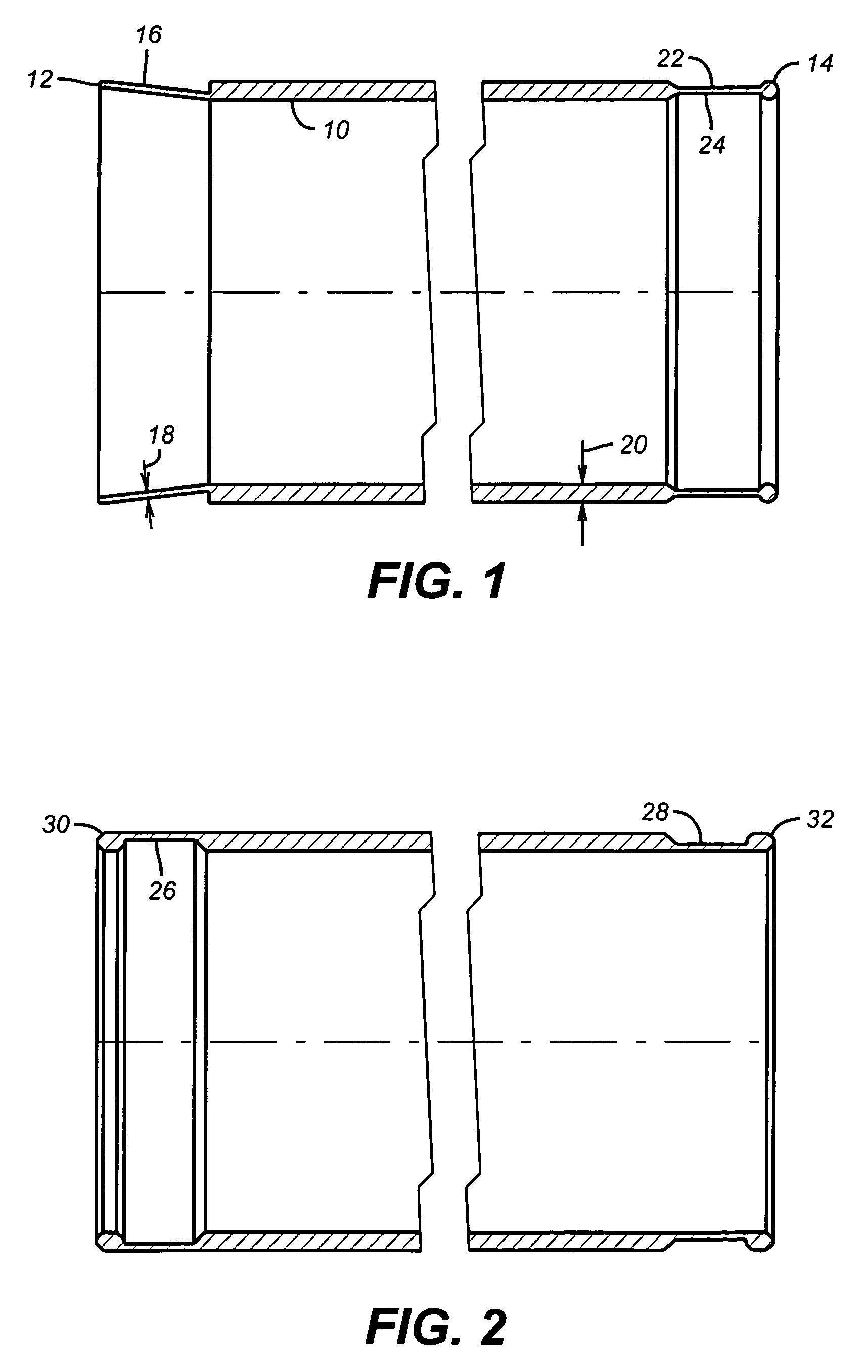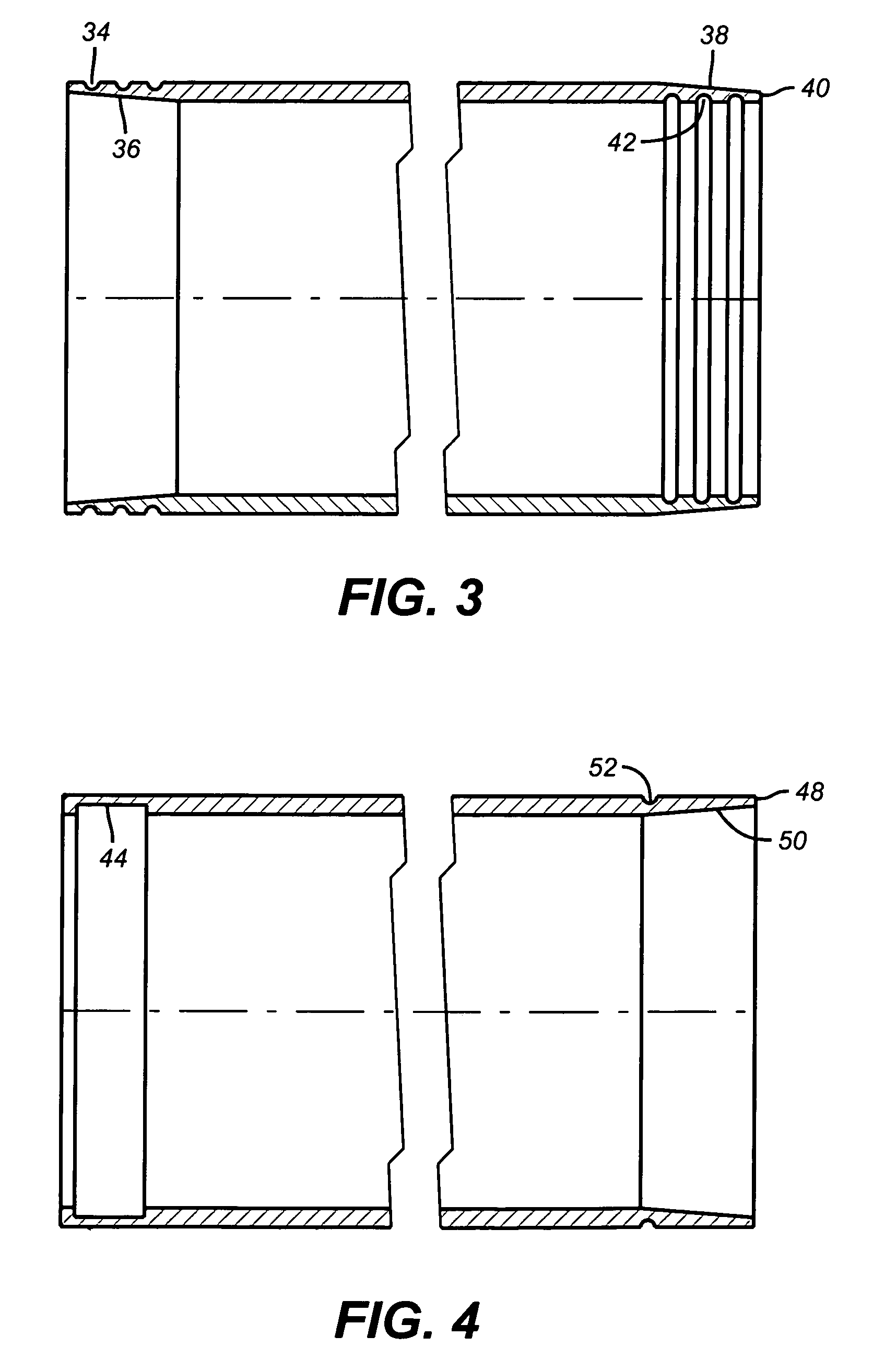Method for reducing diameter reduction near ends of expanded tubulars
a technology of expanded tubulars and end points, applied in the direction of drilling pipes, drilling casings, borehole/well accessories, etc., can solve the problems of unresolved side effects, reducing the diameter of drift, and unable to pass certain tools to a desired location, so as to reduce or eliminate the end effect and reduce the diameter
- Summary
- Abstract
- Description
- Claims
- Application Information
AI Technical Summary
Benefits of technology
Problems solved by technology
Method used
Image
Examples
Embodiment Construction
[0018]The present invention seeks to minimize or eliminate end effects resulting from tubing expansion. The end effect is believed to occur is that as a result of high hoop stresses throughout the tubular induced during expansion. For all sections of the tubular not at an end, the section receives support from both sides. Sections at the tubular's ends are supported on only one end. The high hoop stresses are able to overcome this one sided support and deform the tubular inward, reducing the drift diameter.
[0019]The Figures illustrate several approaches to combat this effect. These approaches can be mixed and matched and different approaches can be used at opposed ends. In FIG. 1, the left end is pre-bent outwardly before expansion. After expansion, even if there is an end effect, the pre-bending counteracts it so that the resultant end drift diameter is at least as large as the drift diameter 10 between the ends 12 and 14. The end 12 can be bent outwardly a few degrees or as much a...
PUM
 Login to View More
Login to View More Abstract
Description
Claims
Application Information
 Login to View More
Login to View More - R&D
- Intellectual Property
- Life Sciences
- Materials
- Tech Scout
- Unparalleled Data Quality
- Higher Quality Content
- 60% Fewer Hallucinations
Browse by: Latest US Patents, China's latest patents, Technical Efficacy Thesaurus, Application Domain, Technology Topic, Popular Technical Reports.
© 2025 PatSnap. All rights reserved.Legal|Privacy policy|Modern Slavery Act Transparency Statement|Sitemap|About US| Contact US: help@patsnap.com



